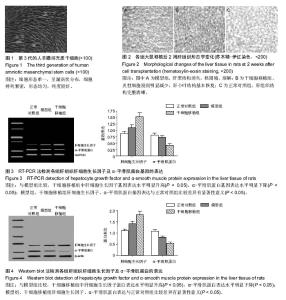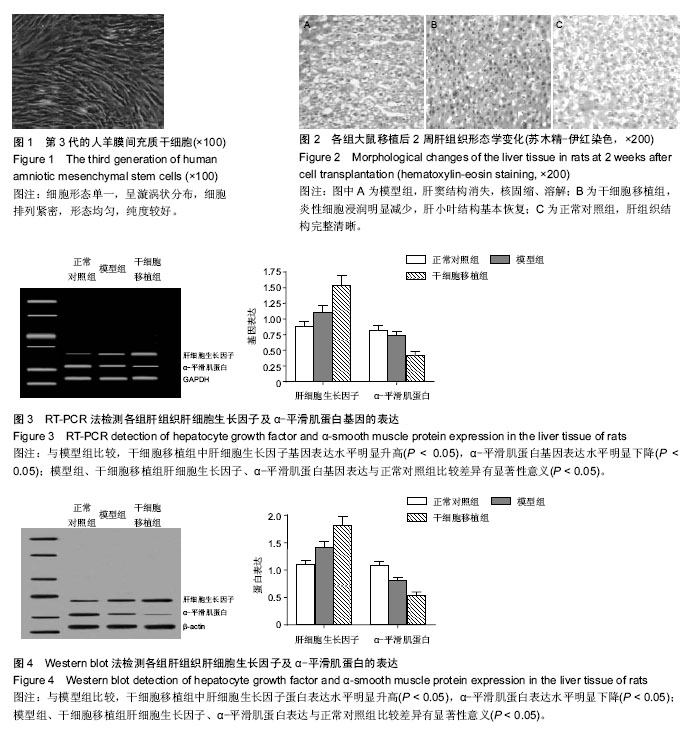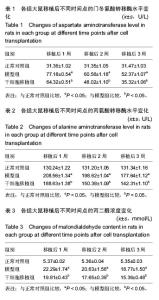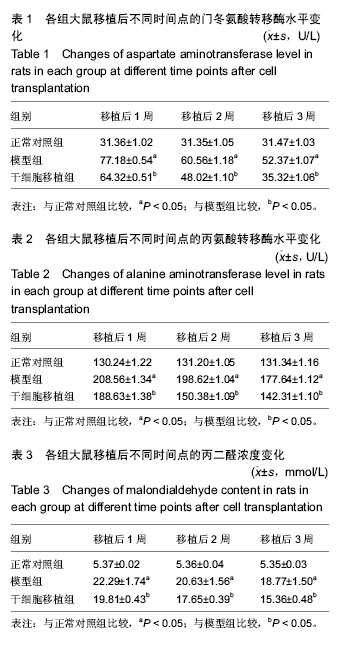| [1] Fox IJ,Chowdhury JR.Hepatocyte transplantation.Am J Transplant.2004;4:Supply 6:7-13.
[2] Strom SC,Bruzzone P,Cai H,et al.Hepatocyte transplantation:clinical experience and potential for future use.Cell Transplant.2006;15 Suppl 1:S105-110.
[3] Soncini M,Vertua E,Gibelli L,et al.Isolation and characterization of mesenchymal cells from human fetal membranes.J Tissue Eng Regen Med.2007; 1: 296-305.
[4] Ventura C,Cantoni S,Bianchi F,et al.Hyaluronan Mixed Esters of Butyric and Retinoic Acid Drive Cardiac and Endothelial Fate in Term Placenta Human Mesenchymal Stem Cells and Enhance Cardiac Repair in Infarcted Rat Hearts.J Biol Chem.2007;282: 14243- 14252.
[5] 张路,方宁,陈代雄,等.人羊膜间充质细胞有向心肌样细胞分化的特性[J].中国生物工程杂志,2007,27(12):84-89.
[6] Alviano F,Fossati V,Marchionni C,et al.Term Amniotic membrane is a high throughput source for multipotent Mesenchymal Stem Cells with the ability to differentiate into endothelial cells in vitro.BMC Dev Biol.2007;7:11.
[7] De Coppi P, Bartsch G, Jr Siddiqui M, et al. Isolation of amniotic stem cell lines with potential for therapy .Nat Biotechnolo. 2007; 1(25): 100-106.
[8] Song XJ,Chen DX,Fang N,et al.Zhongguo Zuzhi Gongcheng Yanjiu yu Linchuang Kangfu. 2007; 11(50): 10056-10060.
[9] 方宁,张路,宋秀,等.人羊膜间充质干细胞的分离、培养及鉴定[J].遵义医学院学报,2009,32(3):234-236.
[10] 朴正福,丁淑琴,张海燕,等.人羊膜间充质干细胞的分离及分化潜能的研究[J].生物医学工程与临床,2010,14(1): 15-19.
[11] Kobayashi M,Yakuwa T,Sasaki K,et al.Multilineage potential of side population cells from human amnion mesenchymal layer. Cell Transplantat. 2008;(17): 291-301.
[12] Kita K,Gauglitz GG,Phan TT,et al.Isolation and characterization of mesenchymal stem cells from the sub-amniotic human umbilical cord lining membrane. Stem Cells Dev. 2010;19(4):491-502.
[13] Perin L,Sedrakyan S, Giuliani S.Protective effect of human amniotic fluid stem cells in an immunodeficient mouse model of acute tubular necrosis.PLoS One. 2010; 5(2): e9357.
[14] Takashima S,Ise H,Zhao P,et al.Human amniotic epithelial cells possess hepatocyte-like characteristics and functions.Cell Struct Funct.2004;29:73-84.
[15] Chien CC,Yen BL,Lee FK,et al.In Vitro Differentiation of Human Placenta-Derived Multipotent Cells into Hepatocyte-Like Cells.Stem Cells.2006;24:1759-1768.
[16] Tamagawa T,Oi S,Ishiwata I,et al.Differentiation of mesenchymal cells derived from human amniotic membranes into hepatocyte-like cells in vitro.Human Cell.2007;20(3):77-84.
[17] Gong LM,Fang N,Chen DX,et al.Differentiation of human amnion derived-mesenchymal stem cells into hepatocytes in rat injured Liver.J Clin Rehabil Tissue Eng Res.2011;15(36):6709-6713.
[18] 任红英,赵钦军,刘拥军,等.脐带间充质干细胞体外诱导分化为肝细胞样细胞的研究[J].山东医药,2008,48(30): 24-26.
[19] Tanabe S,Sato Y,Suzuki T,et al.Gene expression profiling of human mesenchymal stem cells for identification of novel markers in early- and late-stage cell culture.J Biochem.2008;144(3):399-408.
[20] Zeddou M,Briquet A,Relic B,et al.The umbilical cord matrix is a better source of mesenchymal stem cells (MSC) than the umbilical cord blood.Cell Biol Int. 2010;34(7):693-701.
[21] Kretlow JD,Jin YQ,Liu W,et al.Donor age and cell passage affects differentiation potential of murine bone marrow-derived stem cells.BMC Cell Biol.2008;9:60.
[22] Zhang X,Hirai M,Cantero S,et al.Isolation and characterization of mesenchymal stem cells from human umbilical cord blood: reevaluation of critical factors for successful isolation and high ability to proliferate and differentiate to chondrocytes as compared to mesenchymal stem cells from bone marrow and adipose tissue.J Cell Biochem. 2011; 112(4):1206-1218.
[23] Montanucci P,Basta G,Pescara T,et al.New simple and rapid method for purification of mesenchymal stem cells from the human umbilical cord Wharton jelly. Tissue Eng Part A.2011;17(21-22):2651-2661.
[24] Tsagias N,Koliakos I,Karagiannis V,et al.Isolation of mesenchymal stem cells using the total length of umbilical cord for transplantation purposes.Transfus Med. 2011;21(4):253-261.
[25] Shi M,Zhang Z,Xu R,et al.Human mesenchymal stem cell transfusion is safe and improves liver function in acute-on-chronic liver failure patients.Stem Cells Transl Med.2012;1(10):725-731.
[26] In 't Anker PS,Scherjon SA,Kleijburg-van der Keur C,et al.Isolation of mesenchymal stem cells of fetal or maternal origin from human placenta.Stem Cells. 2004; 22(7): 1338-1345.
[27] Casey ML,MacDonald PC.Interstitial collagen synthesis and processing in human amnion: a property of the mesenchymal cells. Biol Reprod.1996; 55(6): 1253-1260.
[28] Sakuragawa N,Kakinuma K,Kikuchi A,et al.Human amnion mesenchyme cells express phenotypes of neuroglial progenitor cells.J Neurosci Res.2004; 78(2): 208-214. |



